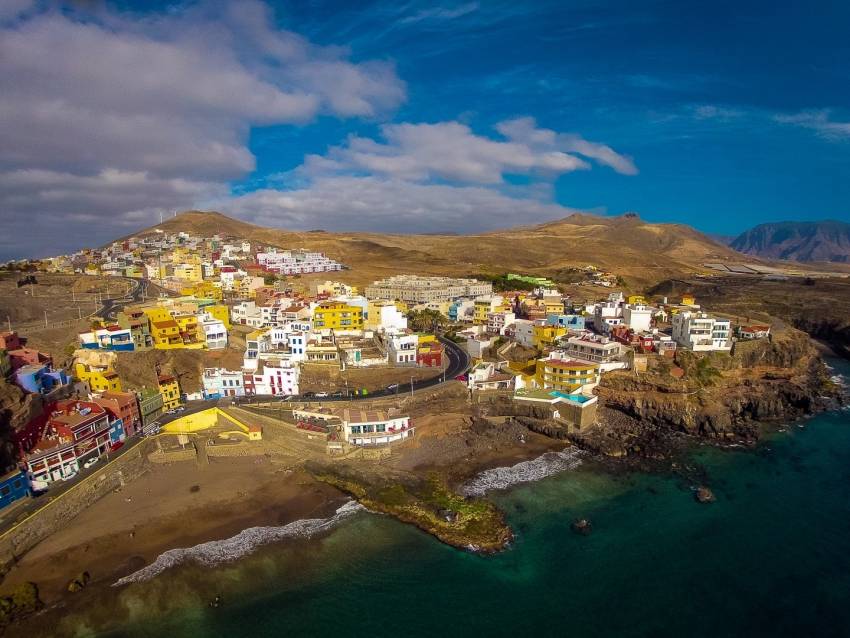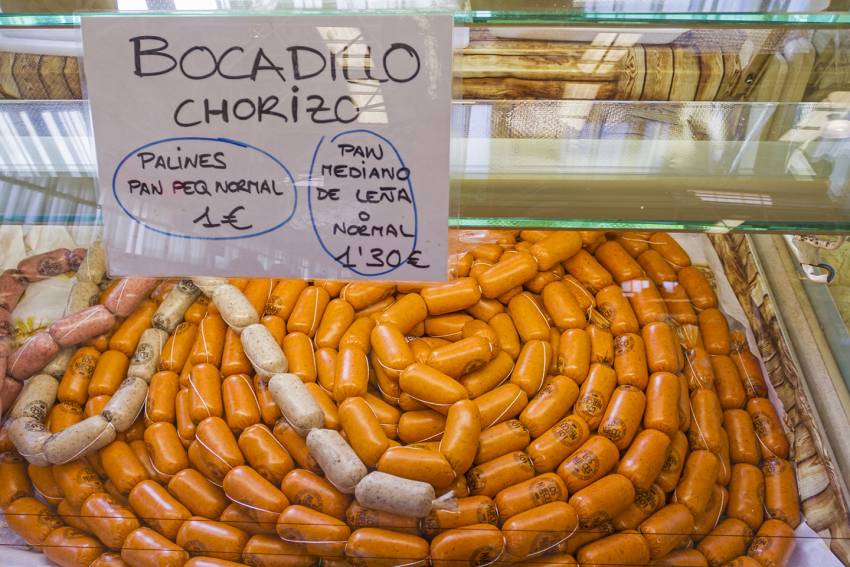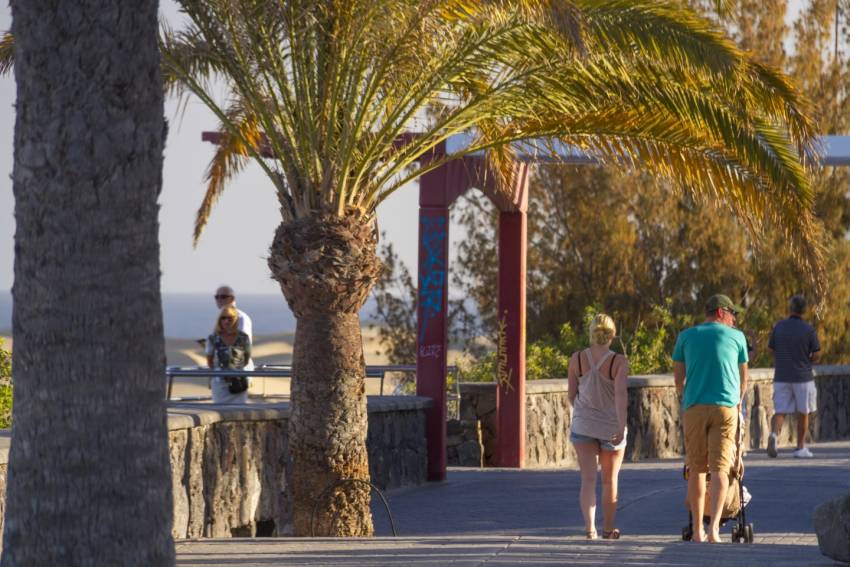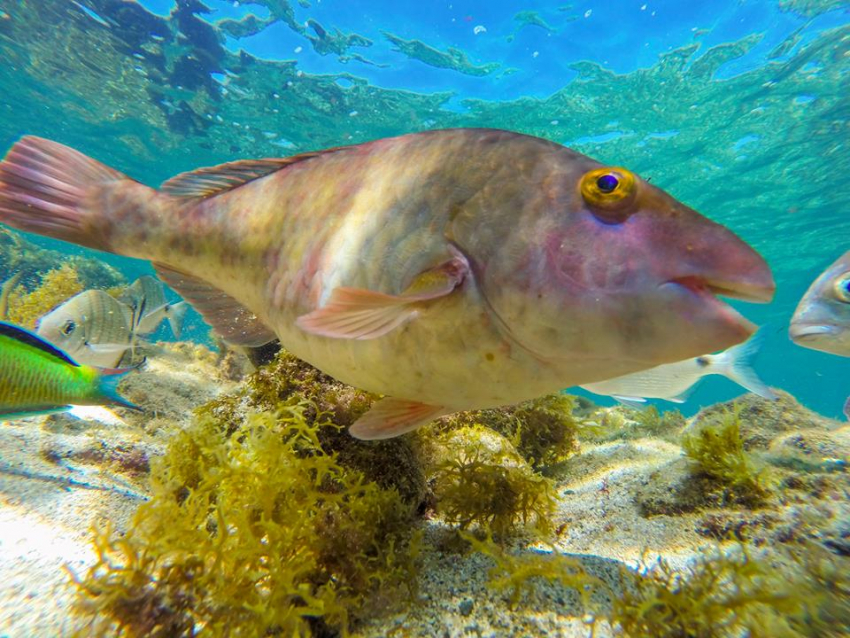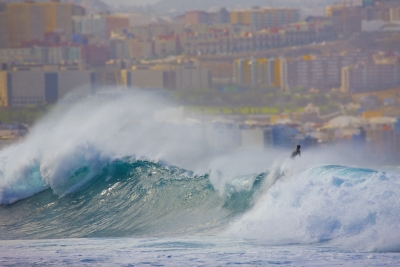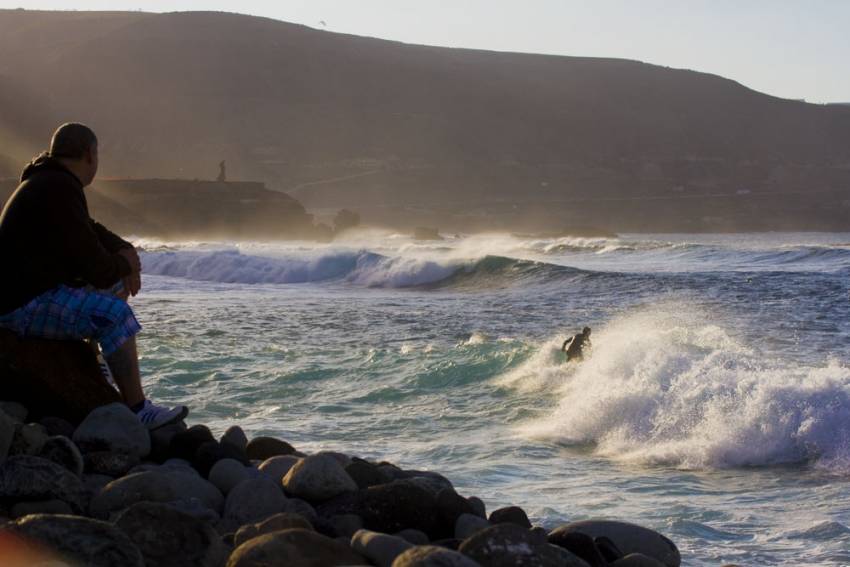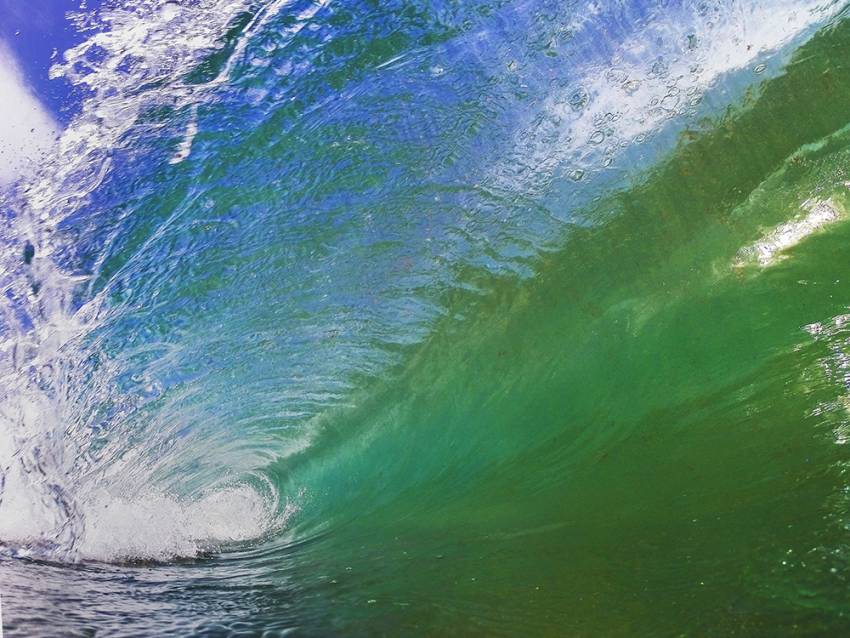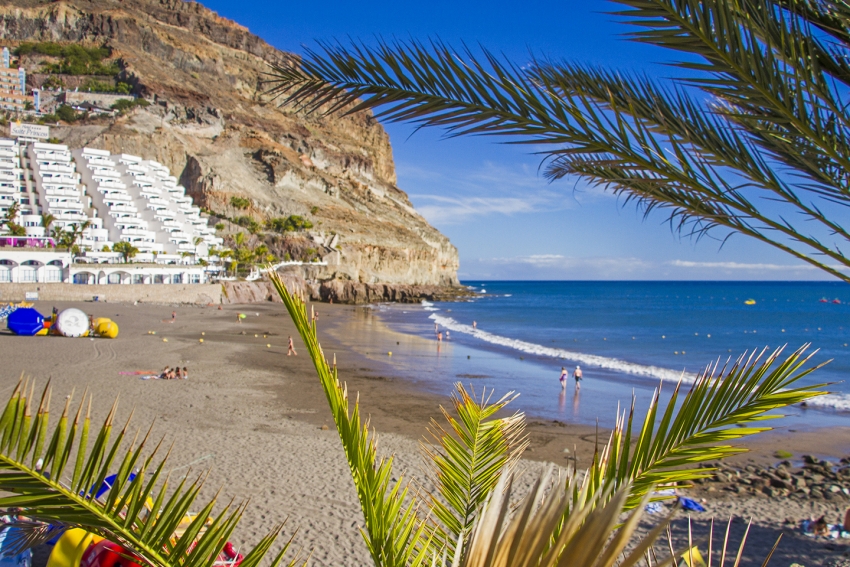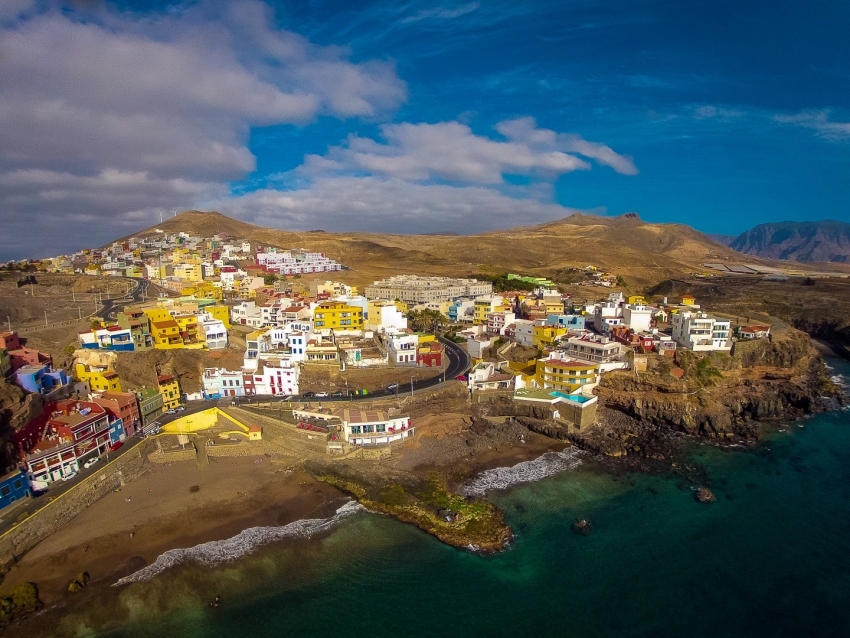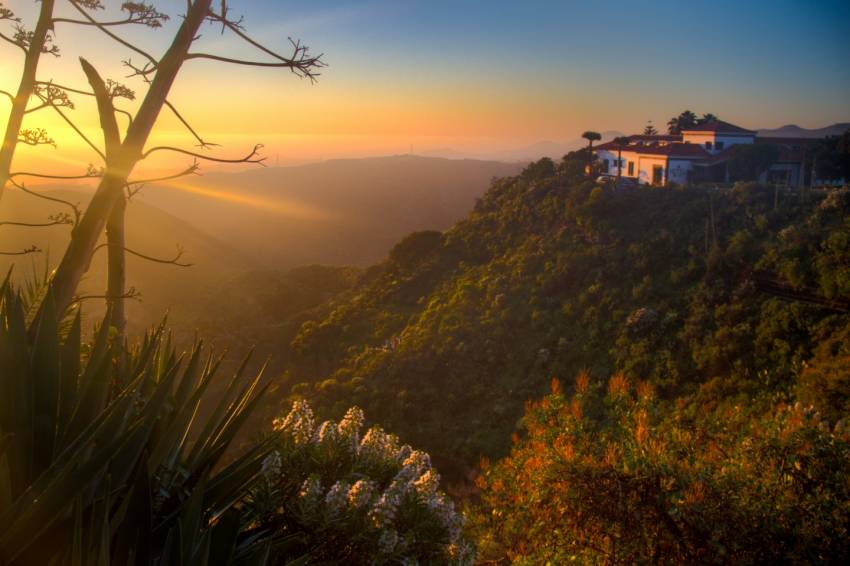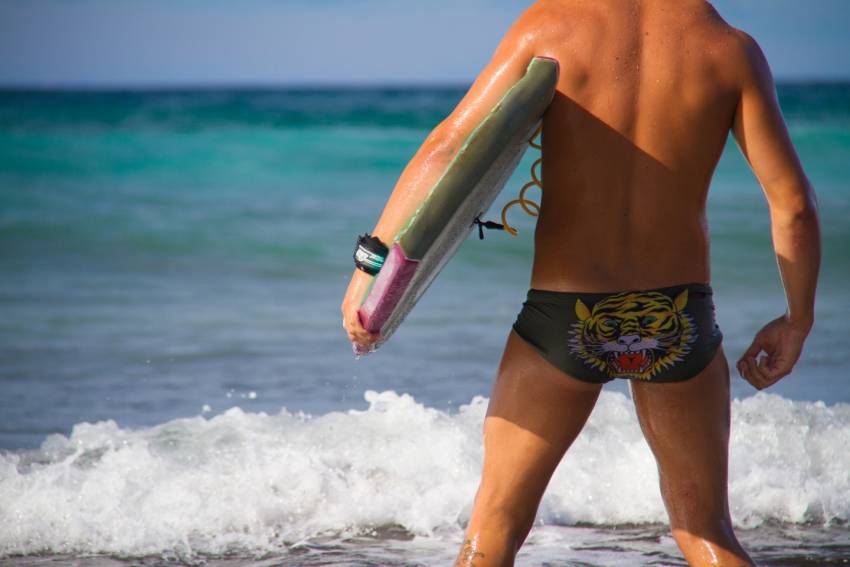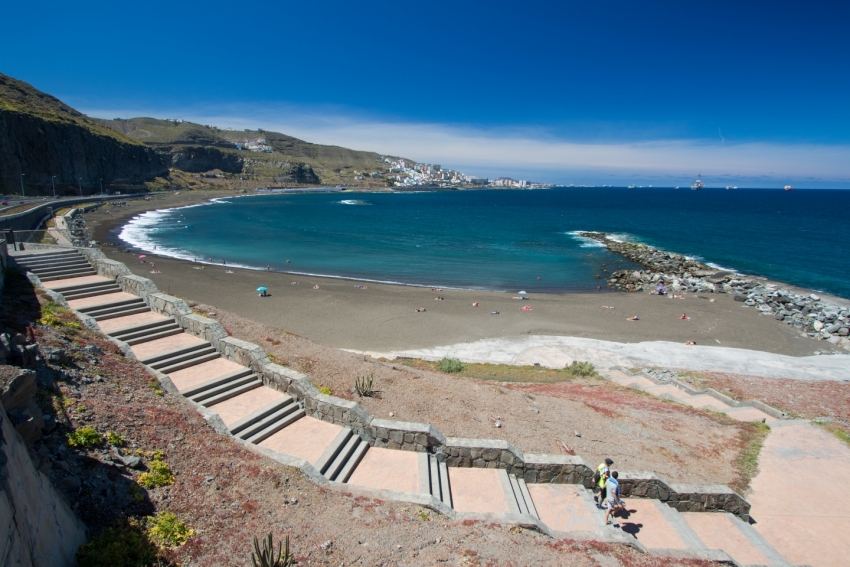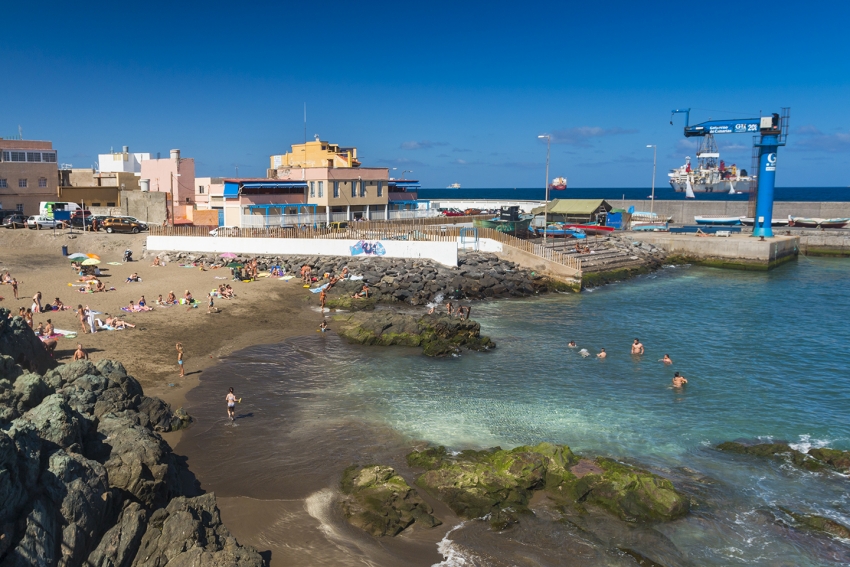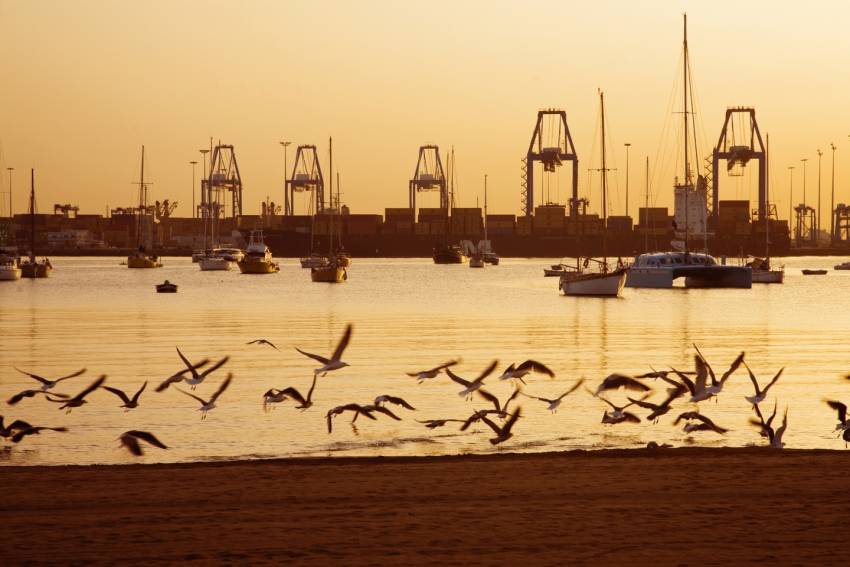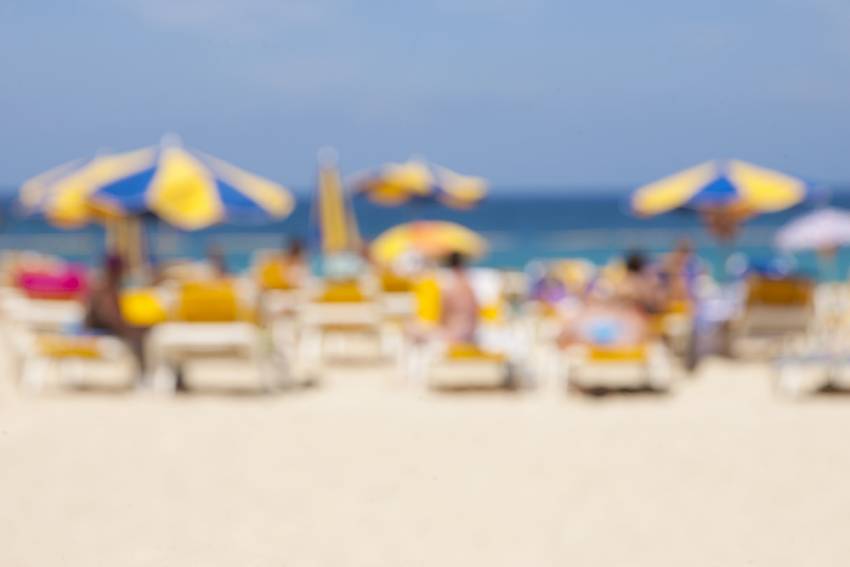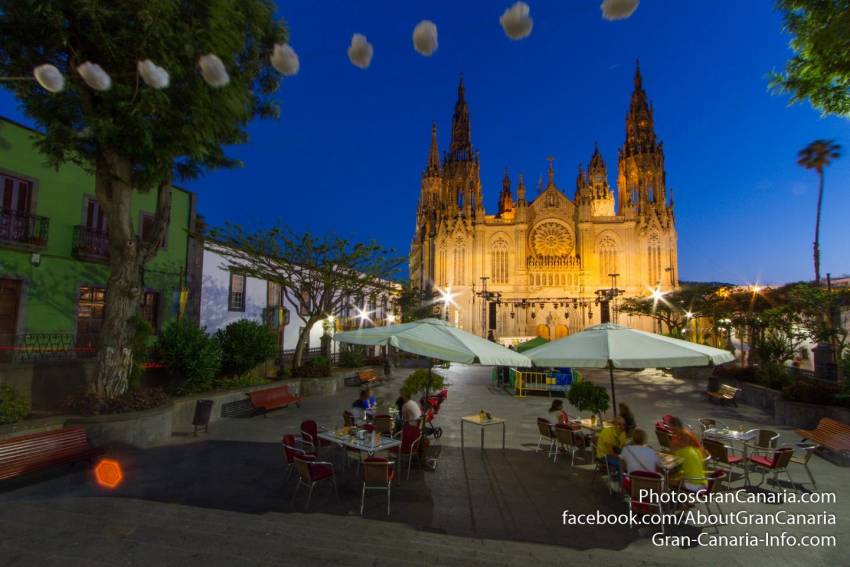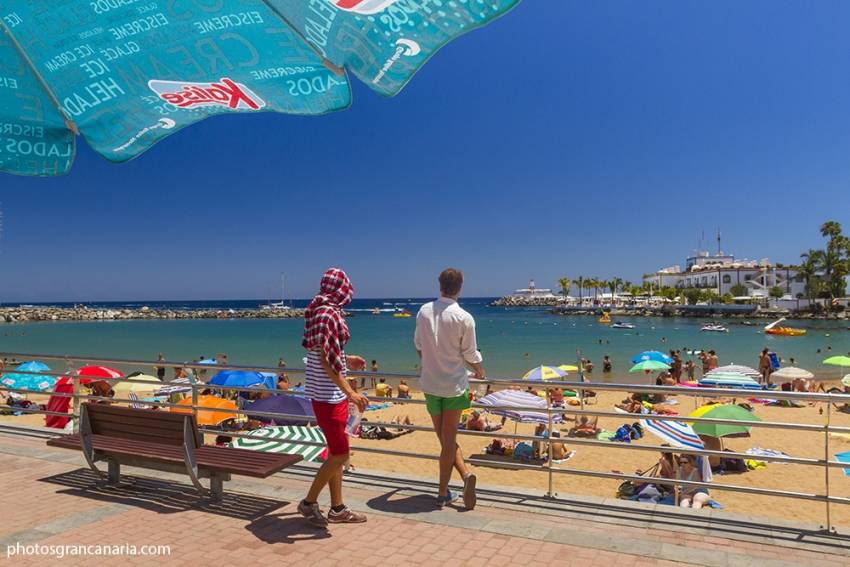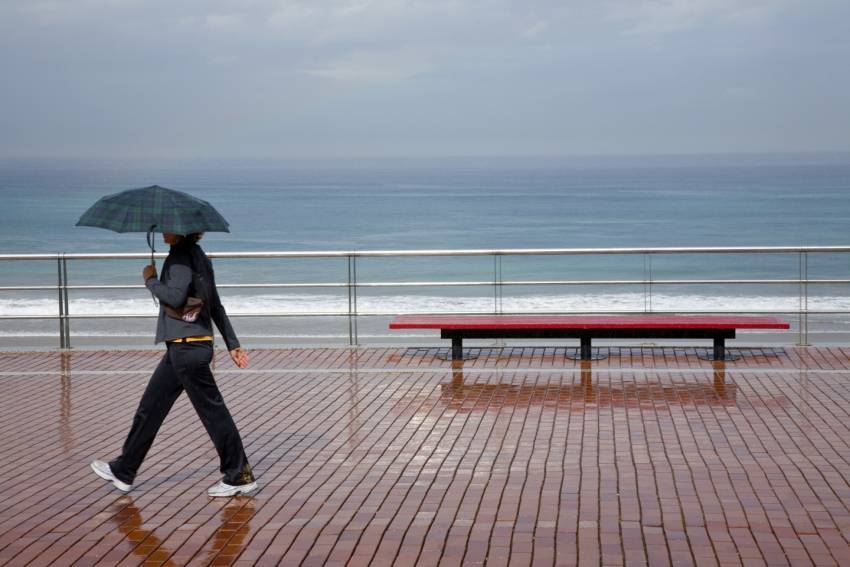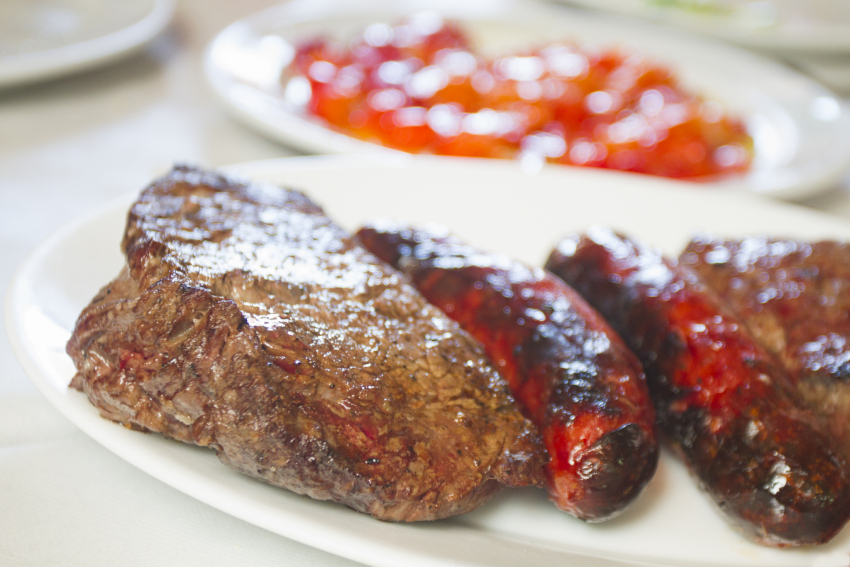Gran Canaria's North Shore, sandwiched between the breakers and the banana plantations is riddled with authentic seafood restaurants. Ignore the roadside warehouse restaurants between Bañaderos and San Felipe and head for these tried-and-tested spots instead.
Puerto de las Nieves
Puerto de las Nieves in the far north west of Gran Canaria caters to mobs of seafood-hungry Las Palmas locals at weekends. You won’t get a table at the beachfront restaurants after 13.30.
Visit during the week and Puerto de las Nieves reverts back to its natural, peaceful state. The odd carload of intrepid tourists that have driven from Las Palmas or along the West Coast road are often the only people on the terraces.
Puerto de las Nieves shuts up shop during the evenings. Most restaurants close but you’ll always find somewhere to knock out a plate of calamares.
Top Picks
El Dedo de Dios restaurant is the only one to the left of the old jetty. While it doesn’t have outdoor seating you can sit by the big windows if you arrive early. The food excellent and the best value in town. The Dedo opens at night.
The quintessential Puerto de las Nieves seafood restaurant with a whitewashed terrace right by the beach and fishing nets on the walls. The seafood is good and the slight premium you pay is worthwhile if you can get an outside table.
Sardina del Norte
This tiny fishing harbour clings improbably to the narrow platform at the base of a high sea cliff in north west Gran Canaria. It’s a popular local spot because of its sandy beach, value restaurants and top-notch dive spots
The beach is small and sometimes gets washed away in winter but is the only sandy beach along the north coast. It has toilets, showers and sunbathing platforms.
Sardina’s restaurants serve seafood and Canarian dishes and their prices are local.
Top Picks
Right by the diving jetty the ramshackle El Ancla restaurant does great seafood, serving it without a trace of irony to divers just out of the ocean. The seafood and vegetable fry up is superb.
Embedded in the cliff overlooking the beach Mama Lolilla has to be one of Gran Canaria’s Top Location Restaurants. Arrive early (before 13.30) and you get the one-table terrace with the best view.
La Puntilla
Las Canteras beach ends at La Puntilla but the walkway continues all the way to El Confital beach two kilometres north. It’s a much quieter part of the city with residential streets and little rocky bays.
The restaurants here are local and serve seafood at lower prices than along the beachfront.
Amigo Camillo is first restaurant on the front as you walk north from the big square at the north end of the beach. It's right on the edge of the rocks with greats views from its covered terrace. The calamares and puntitas (deep-fried baby squid) are delicious and there’s always fresh fish on display.
Las Coloradas
The most northerly village in Las Palmas is tucked away in the La Isleta Peninsula and surrounded by a military base.
Las Coloradas isn’t by the sea and its restaurants don’t have a great view. However, its been a city hotspot for seafood for decades and after a lull is coming back onto the radar.
The Mirador del Atlante
Drive west out of Las Palmas along the coast road and you soon get to Tony Gallardo's amorphous but feminine sculpture. It represents the legend of Atlantis and looks like a giant woman facing the ocean.
Just past the sculpture is the Mirador del Atlante outdoor restaurant serving seafood and local dishes. It’s the only decent restaurant along the north coast with a good view of the city although you do pay for the location.
To reach the Mirador as you come into Las Palmas you have to drive past and turn around in the city: Just take the first exit past the bridge and use the roundabout by the Las Arenas shopping centre.
El Roque
Every house in colourful El Roque village sits on a huge rock sticking out into the ocean in north Gran Canaria. Perched right at the tip is the Italian run Locando El Roque. It does a range of pasta and fresh fish and while it's more upmarket than most seafood places in north Gran Canaria, its location is exceptional.
Puertillo
The only sandy beach along the Gran Canaria North Shore, El Puertillo has a couple of fantastic local seafood spots right by the sand. There's not much to choose between them and they fill up fast at weekends.
There’s a faint odour of garlic in most of Gran Canaria’s little shops and it comes from the string of vivid orange sausages next to the cheese.
Chorizo de Teror is the Canarian version of Spanish sobreasada but is rammed with garlic. It’s basically a thick pate in a sausage skin and is served spread on crusty bread. Canarians eat it at any time but it’s popular as a breakfast snack during fiestas.
Be warned: Chorizo de Teror is a breath monster of a snack and we don’t advise eating it the day before you fly home.
The Terror in Teror
For the island’s most authentic and potent chorizo head to Teror town on a Sunday and buy one in the market along with a fresh bread roll. Just squeeze out the contents into the halved roll and spread with the skin. Then tuck in.
We guarantee that the locals will stop and watch you. They love their Chorizo de Teror but very few tourists are brave enough to try it.
Alex says: Dial down the garlic by cooking chorizo de Teror: Put it in a bowl with about an inch of a strong spirit such as vodka or aguardiente (local firewater made from the remnants of grape pressings). Light the alcohol and the heat shrinks back the sausage skin and melts away some of the fat. Wait until all the booze has burned off and help yourself. You’ll still stink of garlic the next day but the flavour mellows with the heat.
Chorizo de Teror is an authentic Canarian treat but you never get it in hotels or in tourist restaurants: The taste is just too strong for most visitors. If you are inspired to give it a go please let us know what you think of it.
Millions of people come to Gran Canaria every year for its beautiful beaches and perfect weather. Some of you however, want to do a bit more than just get a tan. If you fancy going for a walk in Gran Canaria, but don't want to go too far from the resorts, don't worry: There are plenty of excellent walks right in the heart of Gran Canaria's main resorts.
Walking in Gran Canaria ranges from sunset strolls by the sea to epic treks across the mountains. Here’s our guide to the resort walks in Gran Canaria that combine easy walking with plenty of outdoor cafes and ocean views.
Across the Maspalomas Dunes
The dunes are Europe's only slice of the Sahara Desert. They stretch over 6km from Maspalomas resort to Playa del Ingles. The best way to see them is to walk right across them from the end of Avenida Tirajana to the sea.
See here for a Google Map of the start point for this walk.
The walk takes an hour with a couple of stops for taking photos and running up and down sand dunes. The soft sand is hard going so stick to the crests of the dunes for the easiest path. Take water, a hat and sunscreen.
Once you reach the sea either walk west along the beach back to Maspalomas or east back to Playa del Inglés. We recommend doing the walk at dawn or dusk as you will get better photographs and it won't be as hot.
Beach walking from Maspalomas to Playa del Inglés
If walking through the dunes sounds like too much hard work, then walk along the shore from Maspalomas to Playa del Inglés resorts, or vice versa.
Start either in Maspalomas by the lagoon, or from the Annexo 2 line of restaurants on the beach in Playa del Inglés. The walk is about 6 km long and takes a couple of hours with a stop for a swim, some sunbathing, or a drink at one of the many snack stands on the beach.
You’ll go past the nudist sections of the beach so don't be surprised if you see a few naked people splashing about in the sea or playing volleyball on the beach (what is it with nudists and volleyball?).
The Costa Canaria Walk
You don't even have to get sand in your sandals to walk along the beachfront in Playa del Ingles. The beachfront promenade, called the Paseo Costa Canaria, runs all the way from the end of Avenida Tirajana to San Agustín Beach about 5km east. The whole walk is dune- or seafront and takes you past a couple of quiet, local beaches.
Walking from Playa del Inglés the promenade, which is largely wheelchair friendly, runs behind the dunes and past the three small, sheltered beaches called Playa El Cochino at the end of Playa del Ingles beach.
The walkway continues along the coast to Las Burras Beach with its golden sand and largely local crowd and goes on all the way to San Agustin Beach and up the hill to the end of San Agustín Resort. The whole walk takes a couple of hours one way if you include a drinks stop or a swim at one of the beaches.
Meloneras Promenade
The Lugar las Meloneras seafront promenade is in the newest and most upmarket part of Gran Canaria's resorts. It runs between the historic Maspalomas lighthouse, soon to open as a museum and exhibition centre, all the way to Meloneras Beach. The walk takes you past plenty of shops, bars and restaurants, and past a tiny archaeological park right on the seashore.
Lugar las Meloneras is a great place to walk in the evening as you get to watch the sea set over the Atlantic Ocean. Meloneras Beach itself gets ignored by most visitors in favour of bigger Maspalomas Beach. It is sandy and has its own little shopping centre with bars and restaurants. If Maspalomas beach is windy, there is a good chance that Meloneras will sheltered enough to sunbathe.
From Puerto Rico to Amadores Beach
The safe, cliff-top walk from Puerto Rico resort to Amadores Beach gives you beautiful views of the turquoise sea and rocky shore along the way. There is even a spiral stair case in front of the Gloria Palace Hotel that takes you down to the sea. If the sea is rough, which isn't that often, don't go down the staircase as people have been washed off the rocks during storms.
The walk starts from the shopping centre in Puerto Chico. It takes about 40 minutes one way. Once you get to Amadores Beach you can get a drink or a snack in one of the restaurants, go for a swim and do a spot of sunbathing, and then either walk or take a taxi or bus back to Puerto Rico.
These walks may not take you up into rugged Gran Canaria mountains, or past any rural villages but they give you amazing views of the sea and have plenty of convenient drink stops.
One of the open secrets of Gran Canaria is the high quality of the Scuba Diving.
The fast, barrelling, right-handed point break at El Confital is one of Europe's top bodyboarding waves and hosts European tour events regularly.
A great wave for proficient shortboarders but not for bodyboarders or beginners: Get El Lloret wrong and you end up on the rocks.
La Cicer isn't the best surf area in Gran Canaria, or even in the capital Las Palmas, but it is the most popular as it's where most of the island's surf schools take their groms.
A palm fringed beach with restaurants on the sand that is right in the south of Gran Canaria but rarely gets crowded? Nonsense you say!
World-class diving, great seafood and one of Gran Canaria's prettiest sandy beaches; Sardina de Gáldar is a Gran Canaria Info top spot.
Visit Bandama at dawn when the caldera is full of mist and the picon lava is glowing, and it's one of the island's great spectacles. Visit any time and there's plenty to do and see from a secret bunker to classy wineries.
Only a few of Gran Canaria's 100 beaches are touristy. The rest, spread out around the coast, attract a local crowd and have a different vibe: Canarians will pay for seafood but not for sun loungers. If you want to spend time on a Canarian beach, something we wholeheartedly recommend, then use these tips to judge if you have found your spot.
Drive into Las Palmas along the coast road from the airport and you can't miss La Laja beach and its mob of seagulls. While everybody sees it, only boogie boarders and locals appreciate it.
It's just a patch a golden sand, but La Puntilla beach in San Cristobal is sandy, sheltered and right by some of the island's best fish restaurants.
Gran Canaria' other golden beach is a shadow of its former self but still a great place for a swim. It has a real local feel and a fun boardwalk (see video).
Get your daily dose of island life from Gran Canaria by following us on social media. Here's where to find us:
We post daily photos and new from Gran Canaria on the Gran Canaria Info Facebook page.
En español estamos en I Love Gran Canaria
Click here to follow Alex & Lex's daily shots of island life
Follow Alex and Lex for all the latest news and photos of Gran Canaria
YouTube
Our videos of Gran Canaria and its beaches are all here
Click here to email us
Style Guide: How to write appallingly about Gran Canaria (or anywhere else)
Written by Alex BramwellWe read dozens of articles about Gran Canaria every week. Most of the time it hurts. In fact, you've got more chance of finding an original piece about the island as you do of finding a Canarian in the Puerto Rico Shopping Centre.
Enough is enough.
We've decided to kill the cliché and murder the tired metaphor so we've put our heads together and set the bar high:
Here's our style-guide for Gran Canaria Info articles.
By the way, if we break our own rules, please feel free to shout at us.
The essential clichés
No article can be published without one of the following insightful themes:
Starting with a pun on the island's roundness
Saying it's like Spain but different
Setting out to explore the other, real, Gran Canaria
Revealing that it's an island of contrasts
Mentioning the tourist bight, sprawl, plague, etc, within two sentences
Referring to Gran Canaria as la Isla Bonita (that's La Palma)
Discover Stuff: You're an explorer
To write in an original way you must discover a secret beach, explore a hidden valley or scale a rugged peak. Seeing the resorts and popular beaches with a fresh eye isn't worth considering. Do not under any circumstances focus on details but rather always try to cram the entire island into 400 words.
Do stay in a resort and explore the rest of the island in a day on a Jeep Safari. You'll see it all. In your article only mention the day out.
Scrape the surface: Make as little effort as possible to find anything interesting during your visit. If you must delve, delve into Google.
Unique and wonderful vocabulary
Go heavy on the word unique. Use it at least every sentence and don't both to explain why anything is unique: The readers already know. If you think you're using it too often just switch to 'perfect'.
Fascinating, gorgeous, wonderful, incredible, amazing, picture postcard perfect, etc are also perfectly viable alternatives. All other describing words are redundant.
Use the words traditional and sustainable at least once per article. It doesn’t matter where: Just get them in. Combined with “perfect example of” they get you double points.
The word nice is due for a revival: Use it often as it makes your prose incisive.
The word literally is free. Slap it on the page.
Use words like impart, integrated, intense: Any word that you don't use in everyday conversation makes you sound clever. Better still, combine several beginning with the same letter in one phrase: Alliteration is always fun.
Help us get the word amazeballs off the Twittersphere and into quality prose. The world needs it.
English is too short: Make sure you puff out your prose with lots of wills, woulds, shoulds, coulds, can.
The active voice is nasty. Passive is always the way to go.
Mince the metaphor, crunch the cliché
In the lively resorts, hotels perch, pools are situated, you hit the sun-drenched beaches along with hordes of tourists, cash is splashed, the Yumbo is nudge, nudge, wink,wink (insert funny joke).
Off the beaten track the mountains float in the air above you, remote villages nestle quaintly, views are panoramic and breathtaking, markets and fiestas are colourful and vibrant and full of friendly locals.
Food is always succulent, mouth-watering and delectable. You stumble upon charming local restaurants that are always hidden gems.
Facts get in the way
Facts are so yesterday. Only check yours by referencing other articles found on Google. Get at least one basic fact per article so wrong that it makes the reader's teeth grind. It makes your words memorable.
Locals, what locals
There are no local people in Gran Canaria except friendly ones dressed up in traditional costume dancing charmingly at authentic local fiestas. If you must mention a local in any other context, make sure it's a barman with a dodgy accent.
Narrate to irritate
Refer to yourself in the third person. It's what the queen does and if its good enough for German pensioners, then it's good enough for you.
You need a nickname. Pick one that nobody has ever called you for real authenticity.
Tell the reader all about yourself. They care more about you than about the destination. Include lots of personal details that are unrelated to the content. Blurry photos of your family get you noticd on social media.
Engage with the audience
Beg for likes on social media: People will admire your determination
Post a link repeatedly just in case somebody missed it the first 23 times.
Join a web ring, blog ring, book club or any other network dedicated to sharing each other's content. Promote your buddy's irrelevant content to your audience.
Change the title of your old stuff and repost it as new. Do this often and without warning.
Photos are essential: Include blurry, cloudy and downright terrible ones to boost your reach. If your camera is broken use one of the 10 free photos available on Flickr or Creative Commons. Or steal from the internet: Never credit the photographer.
Want to submit a guest post to Gran Canaria Info? Please use the above as a guide and include plenty of links to your online casino or Viagra shop. We'll definitely publish it on the front page.
Welcome to the Gran Canaria Info blog. This is where we share news, live photos, upcoming events and daily titbits about Gran Canaria.
Arucas town is famous for its colossal Gothic church built with bug money (see below). Oh, its also got a rum distillery and one of the best preserved town centres on the island.
From prehistoric times Gran Canaria's economy has depended on turning the sunshine into things to sell to passing ships. As demand went up and down for what the island grew, it experienced booms and busts: It's why the cathedral in Las Palmas took hundreds of years to finish.
Even before the Spanish it's likely that the island's original inhabitats traded with passing roman and Phoenecian ships until these disappeared. The Canarii then went through a few lean centuries when they were the main export of the islands: Slavers from Europe and North Africa raided regularly.
Crops
At different times large areas of the island were planted with sugar cane, coffee, grape vines, and cactus for cochineal. The Caribbean proved better for sugar production (although rum is still made on the islands), disease put paid to the wine (mentioned by Shakespeare), and artificial dyes destroyed the cochineal trade. Bananas are still a faithful crop but have to compete with cheaper Caribbean imports.
The lean periods saw thousands of Canarians migrate to South America, and especially Cuba and Venezuela. The modern economy of Gran Canaria is based around tourism, and Las Palmas’ huge container port. The island grows bananas, tomatoes, cucumbers and aubergines for the European market and olive oil and coffee are comig back.
Canarian wines and cheese are earning good reputations abroad. Gran Canarian cheese, particularly goat and sheep cheese from Guia in the north, regularly wins international awards. Gran Canarian wine is a mixed bag: The whites are excellent but the reds still lag behind vintages from Tenerife and Lanzarote.
Tourism
Catering to tourists dwarfs all other economic activities in Gran Canaria: Over three million visit Gran Canaria every year. The huge majority stay in the tourist resorts along the south coast.
Tourism is now the islands largest industry and its biggest employer.
Gran Canaria sells itself to tourists as a sunshine destination where good weather is guaranteed. However, it does have to be wet every now and then or we'd be the Sahara desert. The good news is that there is plenty to do in Gran Canaria on the odd rainy day.
Gran Canaria Info recommends:
- Default
- Title
- Date
- Random

